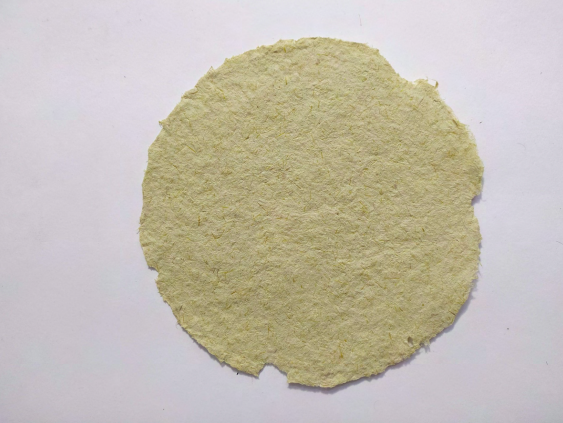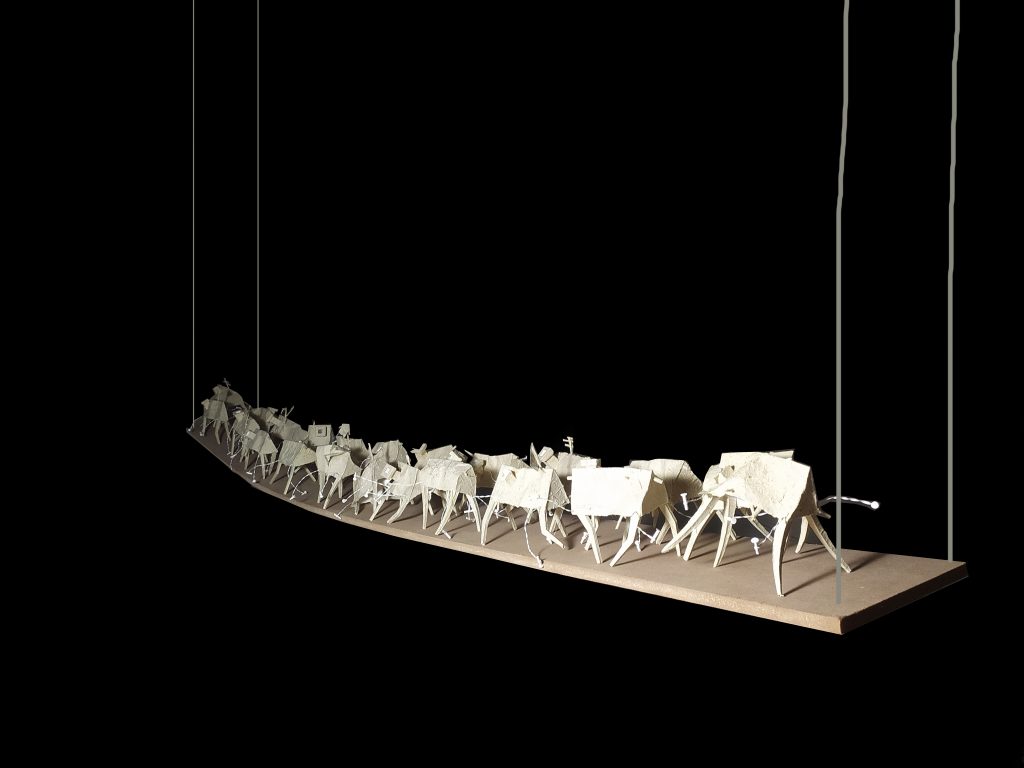Blogs
Paper as Substance and Subject
Ishwari Arambam
Understanding the work of Neelesh Yogi, an artist and IARF 2021 grantee, and his practice of extending the potential of paper as a medium.
In June of 2021, MAP in partnership with 1Shanthiroad Studio launched a relief fund to support artists and their work during the difficult times posed by the Covid 19 pandemic. Open to all practising artists in India, the relief fund received an overwhelming response with over 1000 applications. Twenty artists were selected by an independent jury comprising Paula Sengupta, Radha Mahendru, Indrapramit Roy and Suresh Jayaram. The jury members also offered mentorship conversations to the artists.
In an attempt to showcase the exciting work that was achieved under this grant, we have placed the grantees and their artworks in conversation with each other, to respond to and facilitate a conversation around the common themes or concerns addressed in their art.
Made literally from scratch, Neelesh Yogi’s Project of paper making & developing work looks at paper as both substance and subject. Paper, as we know, is perhaps the most humble and prevalent material that one can find in an artist’s studio. The promise of a blank page and what it can bring forth – sketches, paintings, works of literature, sculptures – remains boundless, and continues to grow unfettered today.
Yogi’s work in that sense extends beyond the perspective of looking at the potential of paper as just two-dimensional. For the first part of the Artist Relief Fund, his work focuses on the process of making paper. It throws light on the step-by-step process of how it is moulded from pulp of rice straw, and later dried to form very thin papad-like material. You can see that unadulterated paper retains the colour of straw, its origins. It is equally interesting to see that the choice of shapes of the paper are circular with jagged edges resembling common shapes – roti, papad and the moon.

Untitled, Neelesh Yogi, 2021, Rough Handmade Paper, Image courtesy the artist
Yogi writes aptly in his concept note “Until now I was using paper as just a medium but in this grant I could utilise my chance of exploring paper making as a bridge of connection between different memories of personal, historical and common experiences.”
Although this starts out as a flatter work of paper, Yogi glues short strands of human hair, and grows it in depth as it is moulded into a rolling pin, a matchbox, a bent-out-of-shape ladle, a curved knife, a tumbler and a fork. These objects that bear the shape of common household utilities, and mimic the texture of human skin with hair are stranded between collage and sculpture.
These constructions look like objects that one would find in many Indian households carefully assembled by an observant member of the community. Yogi writes about growing up in a middle class family and the struggles that came with the experience. The idea is to embody these everyday experiences in the artworks and have “… people interact with them in their familiar form but by changing its appearance [ size and texture ] I try to trigger their personal memories … Through my work I try to create a different world with reference to the spaces/objects I see around me or have experienced but also adding a surreal narrative emerging from the memories of those spaces/objects… The miniaturesque scales of my works are to create a sense of intimacy or closeness.”

Moving Houses, Neelesh Yogi, 2021, Handmade Paper, Image courtesy the artist
For the later and final part of the grant, Yogi assembles detailed paper sculptures of houses with legs. Titled Moving Houses, these houses are Lilliputian in size and are herded together like cattle up on a swing that is ginormous in scale.

Announcement, Neelesh Yogi, 2021, Handmade paper, Image courtesy the artist
He has also constructed miniatures of chairs with animated limbs – holding an umbrella or reading a book, and a speaker system in a public lot. He akins the processes of making these works to his father’s tailoring work that involves cutting and stitching different parts together.
Neelesh Yogi uses the metamorphosis of paper to explore themes of embodiment, movement (particularly of people), and migration of everyday objects and scenes. These explorations that employ the versatility of paper first led him to focus on smaller tools like kitchen items, and slowly expanded to include larger objects and public dwellings.
Ishwari Arambam is an Event Coordinator at MAP. Her love language involves jazzy hip-hop, homemade thalis and brothy meals.








